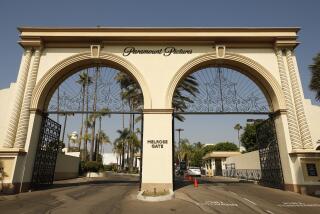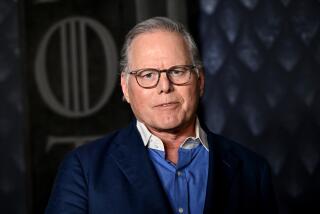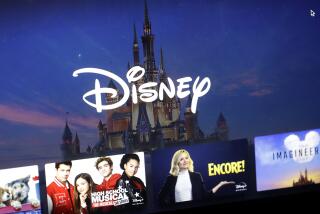AOL Time Warner Says Quarterly Loss Widens
AOL Time Warner Inc., in its first profit report since vowing earlier this month to give frustrated investors more realistic financial projections, said Wednesday that its fourth-quarter loss widened to $1.8 billion from $1.09billion a year earlier partly because of the severe advertising slowdown.
The entertainment giant’s results were in line with revised, tempered forecasts it provided Wall Street on Jan. 7. Even still, the company’s stock on Wednesday dropped 30 cents to $26.40 a share, after trading as low as $24--a 52-week low--on the New York Stock Exchange. AOL Time Warner’s stock is at less than half the high of $58.51 it reached last spring and has slid 43% since the merger of AOL and Time Warner a year ago.
The advertising downturn hurt AOL Time Warner across many of its holdings, including the WB television network, CNN, the America Online Internet service and magazines.
But the company’s cash flow--earnings before interest, taxes, depreciation and amortization--rose 14% in the quarter to $2.76 billion on a 4% increase in revenue to $10.6 billion. Cash flow is used by many Wall Street analysts as a measurement of financial health for media companies because they often have high debt loads and large amortization costs stemming from acquisitions.
Bright spots included a stellar performance by AOL Time Warner’s film units, where cash flow soared 90% to $347 million. During the quarter, the company’s Warner Bros. unit released the hits “Harry Potter and the Sorcerer’s Stone,” which has pulled in $890million worldwide in box-office receipts, and “Ocean’s 11,” while its New Line Cinema division in December released the box-office smash “The Lord of the Rings: The Fellowship of the Ring,” which already has topped more than $600 million in ticket sales.
The fall in the company’s stock, however, reflects not only the weak economy and sagging advertising market, but continued investor skepticism with AOL Time Warner forecasts. Chief Executive Gerald Levin, who is taking early retirement in May, was especially criticized for promising double-digit growth and numerous synergies from the union of Internet giant AOL and entertainment giant Time Warner Inc. Designated Chief Executive Richard Parsons has promised to reverse that, providing investors more realistic guidance.
“They are going to try to under-promise and over-deliver. They’ll focus on methodical ways of steadily building up the company rather than putting targets up in the air that are difficult to achieve,” said UBS Warburg media analyst Christopher Dixon.
In a marathon two-hour conference call with analysts, top company officials--Levin, Parsons, Chief Operating Officer Robert Pittman and Chief Financial Officer Wayne Pace--were clearly restrained in reporting the quarterly results and in making projections for the year. Setting a tone for the session, Parsons said: “The good news is there are no surprises.”
The executives said revenue and cash flow should be flat in the first quarter assuming the economy remains soft. They said revenue should rise a sluggish 5% to 8% in 2002, with cash flow rising from 8% to 12%.
Although the merger is now 1 year old and was announced two years ago this month, company officials are still working overtime selling it. A telling sign came during the conference call when executives spent most of the time reiterating why they believe the merger will work, talking about promotional opportunities such as marketing movies such as “Harry Potter” to AOL users and discussing the promise high-speed broadband Internet connections portends for the distribution of entertainment and information.
The executives reiterated that the company plans a huge $40-billion to $60-billion noncash charge in the first quarter to comply with accounting rule changes for goodwill. Goodwill is an intangible asset that reflects the premium paid when AOL acquired Time Warner. Under the new rules the company must take a write-down since the high-priced stock it used in the deal has since plunged in value.
The company also eased Wall Street concerns by showing healthy growth in subscriptions for its various Internet, cable, network and publishing businesses. The company said it had two special charges: $45 million for costs related to the merger and $1.7 billion in write-offs because of a drop in the value of their investments in Time Warner Telecom and Hughes Electronics.
In reports after the results were announced, analysts repeatedly stressed that the results were in line with the company’s new conservative forecasts, with some expressing surprise that the stock closed down.
Dixon said he suspects that because of its complex financial structure, AOL Time Warner’s stock is caught in the downdraft of investor queasiness about potential accounting abuses growing out of the Enron scandal.
More to Read
The biggest entertainment stories
Get our big stories about Hollywood, film, television, music, arts, culture and more right in your inbox as soon as they publish.
You may occasionally receive promotional content from the Los Angeles Times.










